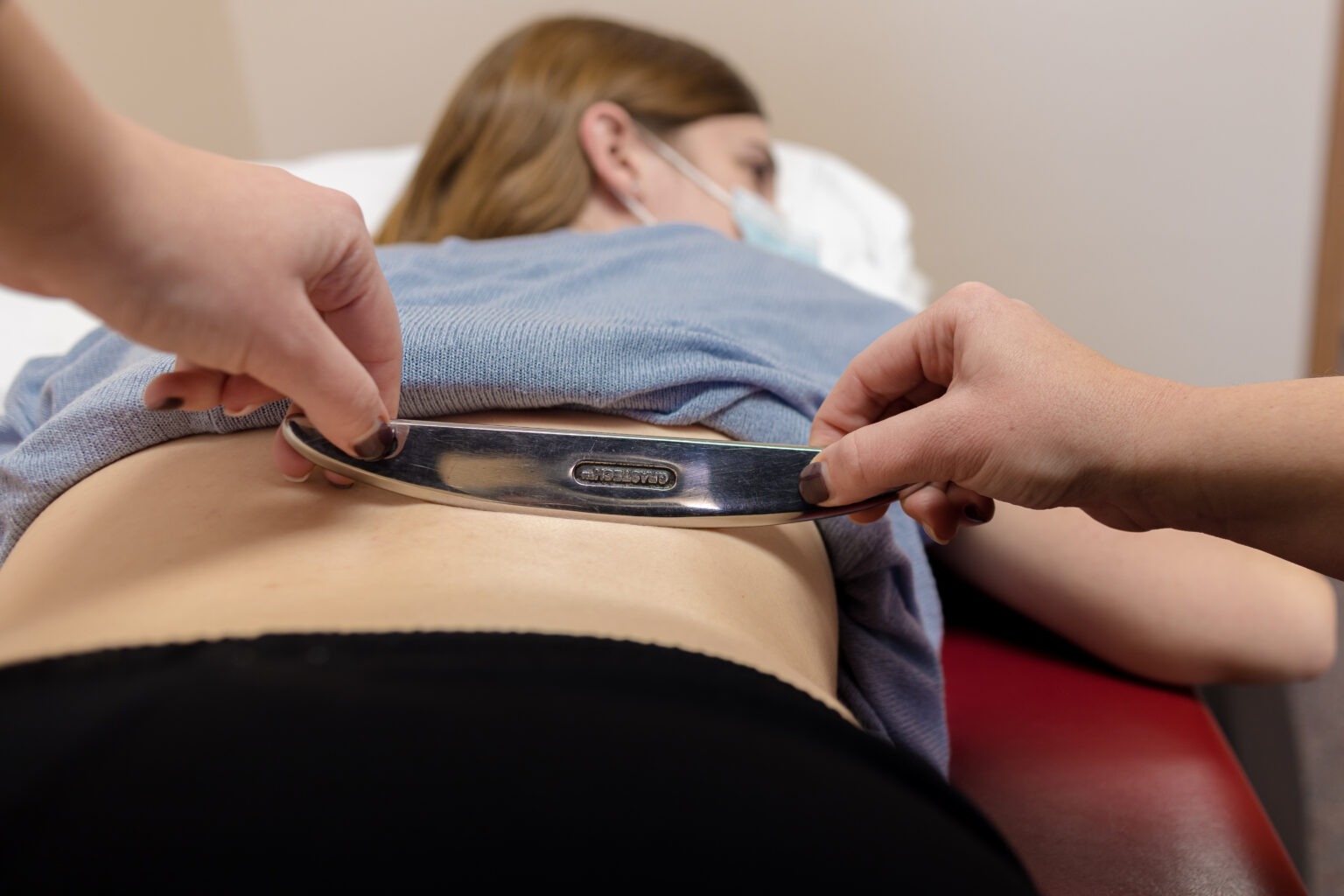In the realm of physical therapy, various innovative techniques have emerged to provide effective relief and rehabilitation for patients. One such technique that has gained significant attention is the Graston Technique. Employing specially designed instruments, this therapeutic approach aims to detect and address soft tissue restrictions, promoting healing and restoring function. In this blog post, we will explore what the Graston Technique entails and how it can benefit patients on their journey to recovery.
What is the Graston Technique?
The Graston Technique is a form of instrument-assisted soft tissue mobilization (IASTM) developed by David Graston in the early 1990s. It utilizes stainless steel instruments of various shapes and sizes to detect and treat soft tissue restrictions, such as scar tissue, adhesions, and fascial restrictions. These instruments are precisely designed to enable clinicians to identify and address problem areas more effectively than traditional manual therapy techniques alone.
How Does the Graston Technique Work?
During a Graston Technique session, our physical therapists apply the instruments to the patient’s skin while using specific hand movements to assess the condition of the soft tissues. The instruments act as an extension of the therapist’s hands, allowing them to palpate the tissues more precisely and detect areas of fibrosis, scar tissue, or other abnormal tissue restrictions.
Once identified, our therapists utilize the instruments to perform specific strokes over the affected area, applying controlled pressure to break down the adhesions and scar tissue. This process encourages the body’s natural healing response and promotes the regeneration of healthier, functional tissue.
Benefits of the Graston Technique:
- Enhanced Tissue Healing: By breaking down scar tissue and adhesions, the Graston Technique stimulates the body’s natural healing process. It improves blood flow, collagen synthesis, and tissue remodeling, leading to faster recovery and improved tissue quality.
- Pain Reduction: Soft tissue restrictions can often contribute to pain and discomfort. By addressing these restrictions, the Graston Technique helps to alleviate pain, increase range of motion, and restore normal function.
- Improved Mobility and Flexibility: The Graston Technique is particularly beneficial for patients with restricted movement due to conditions like musculoskeletal injuries, overuse syndromes, or surgical interventions. The therapy promotes improved joint mobility, flexibility, and overall functional movement.
- Complementary to Other Treatments: The Graston Technique can be seamlessly integrated with other physical therapy modalities, such as therapeutic exercises, manual therapy, and stretching. It complements these treatments by providing a targeted approach to address soft tissue restrictions.
- Treatment of Various Conditions: The Graston Technique has shown promising results in treating a wide range of conditions, including tendinopathies, sprains and strains, carpal tunnel syndrome, plantar fasciitis, IT band syndrome, and more.
The Graston Technique offers a non-invasive and effective method for physical therapists to address soft tissue restrictions and facilitate the healing process. By utilizing specialized instruments, our therapists can target problematic areas with precision, promoting pain relief, improved mobility, and enhanced functional outcomes for patients. If you are struggling with musculoskeletal issues or seeking a holistic approach to physical therapy, the Graston Technique may be a valuable addition to your treatment plan. Consult with our team of skilled physical therapists to determine if this technique is suitable for your individual needs and embark on the path to optimal recovery.




